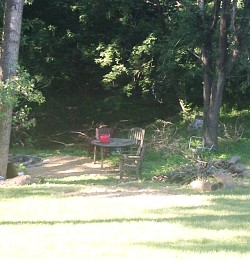Xeriscaping Techniques

Note the spelling of xeriscaping. It's not barren "zero-scaping." A well-designed xeriscape garden has a beautiful mix of low-water flowers, shrubs, groundcover, and decorative grasses that bloom with different colors throughout the year. The common factor among all xeriscape plants is low maintenance -- little fertilizer, no mowing or replanting, and minimal water.
Xeriscaping started in arid climates, but can be used in wetter areas by selecting local plants that need little more than natural precipitation. Here are some xeriscaping techniques and tips.
Start with Strong Soil
Xeriscaped gardens should use perennial plants. No replanting means you only have one shot to prepare the soil.
- Spread herbicide a few weeks before planting.
- Thoroughly aerate the soil and till in 3 to 5 cubic yards of compost or other organic fertilizer for every 1,000 square feet of yard. Fertilizers conserve water and promote healthy plant growth.
Hire a Professional
Particularly for a large yard or steep slopes, consider hiring a landscape designer and a landscaping company. Replacing an entire lawn or garden at once may be a daunting task, particularly if extensive excavating if needed. The rest of the article has ideas to discuss with a professional or apply in a DIY xeriscape project.
Locals Only
If you design your own xeriscape, consult a local landscaper or garden center and find local plants that are suited to your particular soil and climate conditions. For arid climates, here is an extensive list of xeriscape plants with photos and gardening information about each one.
Colonize the Lawn
The easiest way to xeriscape may be to gradually replace a water-intensive lawn, moving from the edge of the yard toward the house. Many xeriscapers still keep a small lawn area for playing and aesthetics. Leave any remaining grass in one spot near the house. It will be more accessible and easier to water.
Plant a Creeping Groundcover
You can let plants colonize the grass. Short low-water plants that spread easily are used for groundcover.
- A groundcover should spread by itself into a dense mat that prevents weeds. Here is a list of attractive groundcover plants.
- Evergreen groundcovers may not be as striking as flowering groundcovers, but evergreens require less maintenance.
Design for the Seasons
Groundcovers can be used as dividers between mulched xeriscape gardens. Design gardens for easy access without trampling the groundcover plants.
- Start with landscape edging to keep out grass, weeds, and groundcover plants.
- Lay mesh weed barriers anchored with U-shaped wire pins.
- Cut slits in the barrier to plant a carefully designed variety of flowers and shrubs.
- Group flowering plants that bloom in different seasons so they show various colors throughout the year.
- Use bark or wood mulch between plants to retain water and reduce erosion and weeds. Flagstones, river rocks, and pebbles also add pretty variety and a walkway.
Plan for Watering Needs
In addition to all the above water-saving tips, plan for efficient irrigation.
- Group plants according to water needs to simplify hand-watering and protect drought-hardy plants that might rot with too much water.
- Consider a drip irrigation system that reaches roots without wasting water on mulch or rocks.
- Terrace steep slopes to soak in rainwater rather than letting precipitation run downhill and out of the yard.
Every step of the xeriscape process should focus on native, low-water plants while creating beauty and diversity.
Looking for a Pro? Call us (866) 441-6648

Landscaping Average Costs
Landscapers Experiences

I Built A Concrete Retaining Wall As A Defense Against El Nino

Tree Removal And Backyard Cleanup Make A New House Feel Like Home



